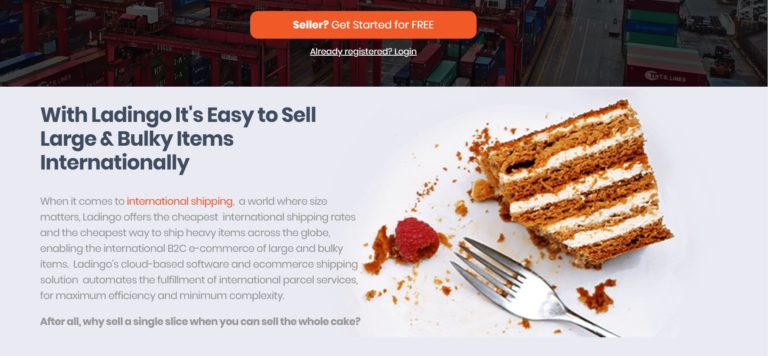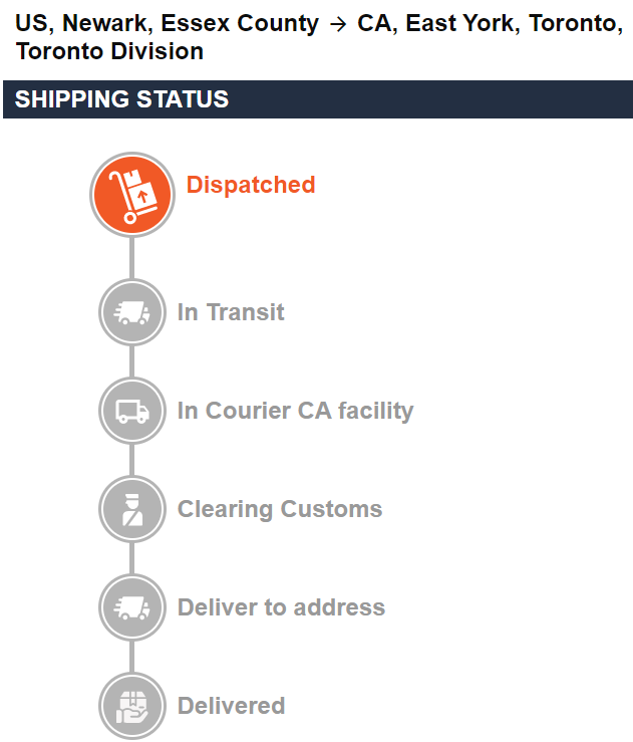Global seaboard container trade was valued at $12 trillion dollars in 2017, with the quantity of goods carried by containers rising precipitously from 102 metric tons in 1980 to a staggering 1.8 billion metric tons in 2017.
Despite the growth of international buying, shipping large, heavy items internationally can be prohibitively expensive for small retailers. The expense—and complex nature—of international shipping prevents many online retailers from shipping internationally even though one study shows that retailers who offer premium international shipping grow 60% faster than those who don’t.
Ladingo, headquartered in Israel, is a cloud-based ecommerce shipping platform that uses machine learning to optimize international shipments. The Ladingo platform simplifies the international buying process for retailers and their customers.
ClickZ recently spoke with Ladingo Co-Founder & CEO, Hagar Valiano, to discuss how their shipping platform works for sellers and forwarders.
Ladingo Co-Founder & CEO, Hagar Valiano, at left
Global shipping pain points
Ladingo was founded in 2018 to fill the growing need of online retailers to ship items internationally at more affordable rates. Global shipping is complicated and involves managing the logistics of ocean freight, ground freight, and customs. In order to have it work seamlessly, the correct infrastructure needs to be in place.
Says Valiano, “We manage the entire supply chain with partners that are top-tier forwarders. Each time we open a new route, we need to find a new partner since there is an entire infrastructure that must be put in place.”
Note: a “forwarder” in shipping-speak refers to a “freight forwarder,” an entity (person or company) that organizes the storage and shipping of merchandise on behalf of a person or organization. Forwarders coordinate a host logistical tasks including booking cargo space, tracking inland transportation, preparing export documents, warehousing, and more.
Ladingo works with forwarders that are thoroughly vetted, to provide the appropriate infrastructure based on the shipping route. Ladingo takes on the management of complex international shipping procedures (including customs laws and requirements) for the retailer. They initially rolled their technology out to one route between Israel and the U.S. and officially announced their global launch this month, after adding more routes.
“U.S. brands are very popular and known throughout the world,” explains Valiano. “This is why our first customers are from the U.S. We just started a new U.S./Canada route. I think it’s natural for online retailers to open new markets in Canada. With Ladingo, they don’t have to invest anything in logistics.”
Container sharing and machine learning—how it works
It’s easy for forwarders to work with Ladingo and the relationship is mutually beneficial since adding high-end forwarders opens more shipping routes for Ladingo’s retailers, while working with Ladingo enables forwarders to earn more money without allocating extra resources.
From a seller perspective, the cost of working with Ladingo is baked into the cost of shipping. Ladingo’s optimization software, powered by AI, makes it possible for online retailers to share space within shipping containers that are already en route to a specific destination, lowering the shipping cost per item by as much as half.
Says Valiano, “If you compare the U.S. and Canada shipping rates at Fedex, for example, our rates are about half or less. This is thanks to our container-sharing methodology. We call it the Uber pool of containers.”
Ladingo’s approach to container sharing is why each buyer only pays for their portion of a given container and is ultimately what makes the shipping price, even for large items, affordable.
Ladingo’s platform optimizes at multiple levels. First, it involves selection of the appropriate forwarder. The software identifies what forwarder is the most appropriate for every package, to what hub it will go, and where it will be picked up from. This is one level of optimization.
Sample shipping confirmation detail (with label) from Ladingo
The next level of optimization is inside the container itself. Because Ladingo’s model relies on container this sharing component to cut costs, they need to consider weight, volume, and loading terms such as whether an item is fragile (or not). For example, if a of glass table is being shipped, it can’t have heavy items placed on top of it (e.g., it’s not stackable) or maybe it is stackable, but the weight must be limited.
“Per Valiano, “The system is continually learning how to make the process better and optimize the container in the maximum way.”
By maximizing space within each container, Ladingo makes the shipping rates as affordable as possible.
There is still a human element to ocean and ground shipping. That is, robots aren’t loading containers yet. It is possible for the person loading the container to make a different decision from the loading plan provided by Ladingo’s software. To account for this, the software allows a sufficient buffer so workers can load and optimize the container appropriately. This is a key reason why Ladingo works with only top tier forwarders who can manage white glove shipments.
Removing the burden of international shipping for online retailers
Ladingo is fueling growth by attending events, and visiting customers and prospects in the U.S. This technology is potentially very lucrative to online retailers because it allows them to open a new market with zero investment in logistics.
Sample shipping status notification from Ladingo
The buying experience of purchasing an item from a Ladingo-enabled shop is seamless. “Now someone can buy a sofa just as easily as they can buy a phone case,” says Valiano.
One of the key benefits for retailers who work with Ladingo is that they take care of all customs issues. Valiano explained that there is a different customs approach for each country.
“If you don’t take care of customs the right way,” says Valiano, “the buyer will bear the cost of surprise charges. You need to keep up with all the rules. The cost of shipping as shown to the customer includes everything related to customs charges and any applicable taxes. It’s guaranteed.”
If retailers want to get started with Ladingo, they simply need to sign up. Retailers have the option of integrating Ladingo’s software with their website or using a shipping calculator (without integration), though Valiano always recommends integration because checkout is more seamless for buyers.
Says Valiano, “Ecommerce is only limited by logistics. This is the key to making the ecommerce market grow at a much more rapid pace. We see Ladingo as the leader in the shipping of large products globally and there is absolutely no limit.”
source https://www.clickz.com/ladingos-machine-learning-platform-makes-shipping-large-items-affordable-for-small-retailers/257749/




No comments:
Post a Comment